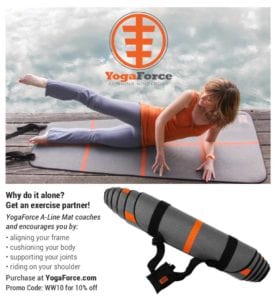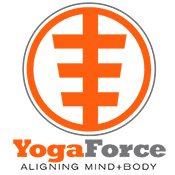
Annie Appleby, Founder & CEO, YogaForce on the Mat
CHECKLIST: THINGS TO REMEMBER BEFORE STARTING YOGA
Yoga is the “It” word today. Everybody, literally everywhere knows about it. Half of them are already taking classes.
If you’re still new to this concept, you must be living under a rock. Before entering the world of yoga, you must first be mentally prepared. As a yogi, you’ll go through changes in thought patterns and physical structure.
For people looking forward to changing their lives for the ultimate better, this is your destiny tab. So I’m here to provide a checklist for beginners before they take on this new fad.
- Eat Light before Commencing
Yoga is an intense exercise, even though it doesn’t seem so. You’d have to use all your body parts to hold a pose. Warning: you’ll be sweating a lot.
Although you should avoid performing Yoga in a full stomach, try being just slightly full. Yoga in the morning after breakfast is the ideal time.
A cup of coffee with some toast or fruits will keep you light and ready for yoga, simultaneously keeping your stomach cool.
- Wear Comfy Clothes
I get it. You have a great bod, and you want to flaunt it. No doubt you’re spending a lot of time at the gym.
Don’t be surprised when I say this: yoga is done best without clothes. Yes, you’ve heard that right.
However, if you’re going to be with a group of people, you must have clothes on. Try to wear something light and breezy, since you’ll be sweating a lot. Cotton is the way to go!
Grab a nice pair of yoga pants in your favorite color, a cute tank top, pull your hair up into a nice little bun, and you’ve met the appropriate dress code.
There is no need to be particular about the type of shoes you’ll be wearing since yoga is done barefoot.
- Find the Best Mat
A good quality yoga mat will ensure body alignment and resistance to promote excellent posture in every pose. (See photo above.)
The material of the yoga mat is also important to avoid unwanted accidents during yoga. You need cushion and you do not want to slip. The YogaForce A-line Mat is one such mat. (Remember to use code WW10 at checkout.)
Getting professional help in picking the right mat for you is recommended. If your mat is helping you do awesome poses, make sure to share the information with your classmates.
- Address Problem Areas
It’s unlikely that you’ve popped into this page randomly unless redirected by an advertisement. People who are diverted to yoga are generally looking for a fix to one or a few of their current problems.
The problems may be health-related, mind or stress-related. For whatever reason you had to ‘google’ about yoga, you must be aware of it at all times.
Yoga moves can be tailored according to specific needs. For example: if you’re suffering from back pain, your teacher will advise you a more a specific, apt yoga style.
However, if you’ve been advised by your doctor otherwise, try and reap the benefits of inversion tables.
Luckily almost all yoga poses heal stress, anxiety, and depression. However, yoga must be practiced every day, at home if not in class, in order to enjoy its full benefits.
- Adapt to Poses Slowly
For beginners, yoga will be as complicated as acrobatics. It requires practice, concentration, determination, and balance. If you’re not focused on your yoga goals, it’s likely you may quit halfway.
You must understand why you chose yoga, and not dancing or heavy lifting or jogging. You want to achieve something, such as healing of a condition or disease.
Since our mind and body are always restless, yoga can be a challenge. But you must push through the obstacles.
When you conquer your mind and body, you’ll be able to achieve things in life very easily. Be patient with your progress. But don’t hurt yourself by trying to hold a pose for too long.
Usually, yoga teachers play a calming music and speak softly in class. The peaceful environment of the class should aid you in attaining peace of mind and body during yoga.
You can re-create the same environment at home when you’re doing it by yourself.
- Silence is the Key
Yoga is designed to promote inner peace. If you’re hearing a noise outside, your focus will automatically shift. You don’t want any distractions while holding your pose.
Avoid having people around (unless in class) when you decide to perform yoga in the next hour or so. People, pets, and noise – anything can distract you from focusing on yourself.
Lock the door, if necessary. Or let people know that you don’t want to be disturbed for a while. When you have a peaceful environment outside yourself, it gets easier to attain peace within.
When you’re at peace, you’ll breathe and be able to feel your muscles stretch during poses. At this time, you’ll be able to attain a balance between your mind and body, which is yoga’s ultimate goal.
In Summary
Some people make yoga sound very complicated, technical and descriptive. It’s time to change that mindset.
When you constantly think about being technically right during yoga, you miss out on the peace it’s supposed to provide. Yoga should relax you, not make you more anxious.
Practice will eventually improve your poses and prolong the seconds you can hold them. Unless you plan on becoming a yoga professional, you don’t have to learn and perfect every pose.
Save an hour or less every day for yoga, and the healing and restoring of your inner energy will take place on its own. This’ll enforce a positive effect on every sphere of your life.
Author Bio:
Emily is a content writer at FeedFond. A flagbearer of organic eating and a fitness freak, she’s a healthcyclopedia. To read more of her articles, visit FeedFond.com.







